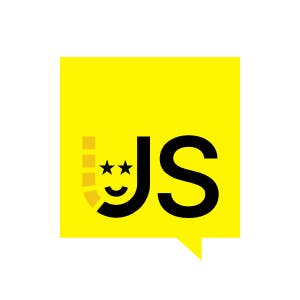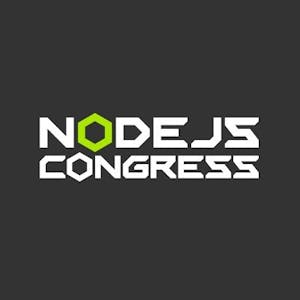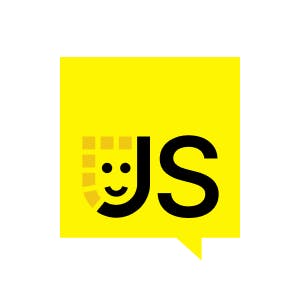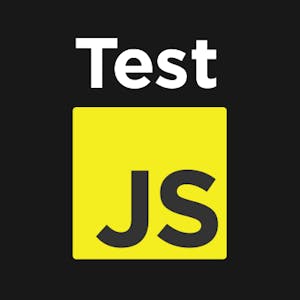In this talk Cecelia will walk through some options for integrating automation into your React Native deployments, including configuration, testing, code signing, and app store uploads. Whether you are just getting started with automation or want to build a full CI/CD pipeline, this talk will have tactical examples you can start using for your own React Native app.
Automating React Native Deployments
Video Summary and Transcription
This Talk discusses the benefits of automating React Native app deployments and explores tools like Trapeze for automating configuration updates and GitHub Actions for automating the build process. It also highlights the use of signing credentials tooling and cloud credentials management tools like Fastlane Match or AppFlow for more complex builds. The Talk emphasizes the automation of build upload and testing using tools like App Store Developer APIs, Fastlane, Bitrise, or AppFlow, with a specific focus on Fastlane's ability to increment build numbers, build the app, and upload it to TestFlight.
1. Introduction to Automating Deployments
Hi, welcome to Automating React Native Deployments. I am Cecilia Martinez, a developer advocate for AppFlow. Today, I'll talk about shipping React Native apps and the benefits of automation in the deployment process. We'll start with automating configuration using tools like Trapeze to update build numbers. Then, we'll explore automating the build process for native iOS and Android.
Hi, welcome to Automating React Native Deployments. I am Cecilia Martinez. I am a developer advocate for AppFlow, the CI CD platform built by Ionic. You can feel free to connect with me on Twitter or GitHub, at Cecilia Creates, or on LinkedIn using my name, Cecilia Martinez.
I'm here today to talk to you about shipping React Native apps, specifically the deployment process. For many developers the deployment process is very manual and very complex. You have to prepare your app code for distribution, you have to compile the signed native binary. You also have to deliver that native binary to the app stores, both for iOS and for Android, and deploy that to manual testers in order to actually make sure that your application works as expected. Once you've gone through all of that, you still have to publish your app for all users and ensure that you have ongoing support.
Now there are some benefits to implementing automation into this process. So in this talk we're going to review some ways that you can incrementally implement automation into certain high impact areas of the deployment process. First we'll start talking about configuration. So, one of the areas where you can implement automation in the configuration aspect is to auto-update configuration values like the Build ID. So typically for each new version of your application, you're going to want a fresh build number for iOS and a version code for Android. This can be very tedious to do manually, especially for React Native apps because you need to go into the source code for each of those platforms and update it. Being able to do this automatically in a CI environment makes it much easier and ensures that all your developers are on the same page.
To do this, you can use a tool like Trapeze. Trapeze is a free and open source tool built by Ionic. You can learn more at trapeze.dev. But Trapeze allows you to use YAML to create a file that contains instructions for how you'd like to configure native applications. In this case, we are using a CI build number environment variable. This is typically provided by your CI CD environment. Whether you're using GitHub Actions, CircleCI, or in this case, we're talking about AppFlow, you can update this to be whatever the CI build number environment variable is. We're then matching that CI build number to either the iOS build number or your Android version code, depending on what platform that you're building for. Then in your package.json for your React native app, you will have a script. In this case, we have a CI configure script that will run Trapeze and reference that CI.yaml file that we just looked at. Based on what platform that you're building for, again, this is an environment variable provided by your CI CD provider, you will update either that iOS build number or the Android version code. This is not only helpful to ensure that you always have a fresh build number but it's also good for things like debugging, for testing, and grabbing build blogs from your CI environment because it will always match up to the version code of your app.
Next let's talk about building. If you would decide to automate your build process, it can be really high impact because there's so much that goes into building for native iOS and Android.
2. Automating the Build Process
To automate the build process for a React Native app, you need to trigger the native build, install the required dependencies, apply signing credentials, and upload the build artifact. A simple example using GitHub Actions for an Android debug build is discussed, including the trigger, dependency installation, bundling the app, and creating the native assemble debug binary using Gradle. For more complex builds, such as Android release or iOS builds, additional steps are required, including specifying keystore information and encoding/decoding files and passwords. It is recommended to use signing credentials tooling or cloud credentials management tools like Fastlane Match or AppFlow.
You need to trigger the native build. You need to install the dependencies that are required for your build. If you're building for release or for App Store you need to decode and apply signing credentials as well as finally upload that build artifact.
Let's take a look at a GitHub Actions example for a simple Android debug build. This is probably the simplest automated build that you can do. The trigger is workflow dispatch. This is a manual dispatch but you could do things like pushing to a branch or a new commit. We're running on Linux and we're checking out our code.
Here's where we're installing our dependencies. Even though Java and Android Studio is installed in GitHub Actions by default, we do need to set it up to be the correct version to correspond to our React Native app. We also want to cache Gradle for improved performance. We're also installing the dependencies that we need for React Native. In this next step here we're bundling the app. This is required before you actually build when you're doing Android debug. Then we're going to use Gradle to actually create that native assemble debug binary. Ultimately we want to ensure that that APK file gets out of our build environment. We're using the upload build artifact GitHub Action. We're also passing through that path in order to be able to access that APK file.
Now, as I mentioned, this is about the simplest one you can do. It's an Android debug build. We don't need any signing credentials. If you're doing an Android release build or any kind of iOS build, not for simulators, then it gets a lot more complicated. For Android, you'll need to specify your keystore file, password, key alias, and key password in your build.gradle file. However, the more complicated part is ensuring that these files and passwords are available in your CI environment. Because it's a file and not just a text-based password, you're going to need to actually encode that in base64 and then decode that in part of your build process. For iOS, for example, this is what it looks like with GitHub Actions. You have in your secrets, you have your store base64 certificate and provisioning profile as well as the passwords, but then you also do need to encode and decode that. Because this can get super complicated and easy to mess up, I highly recommend that you use signing credentials tooling. This can be pre-built steps or actions, so if you're using GitHub Actions or it could be incorporated into like CircleCI for your CI-CD environment, or you can use a tool for cloud credentials management like Fastlane Match or AppFlow. As an example, in AppFlow, you can upload your Android and iOS credentials that are stored on AppFlow servers.
Check out more articles and videos
We constantly think of articles and videos that might spark Git people interest / skill us up or help building a stellar career
Workshops on related topic
Tests rely on many conditions and are considered to be slow and flaky. On the other hand - end-to-end tests can give the greatest confidence that your app is working. And if done right - can become an amazing tool for boosting developer velocity.
Detox is a gray-box end-to-end testing framework for mobile apps. Developed by Wix to solve the problem of slowness and flakiness and used by React Native itself as its E2E testing tool.
Join me on this workshop to learn how to make your mobile end-to-end tests with Detox rock.
Prerequisites- iOS/Android: MacOS Catalina or newer- Android only: Linux- Install before the workshop
In this three-hour workshop we’ll address these questions by discussing how to integrate Detox into your development workflow. You’ll walk away with the skills and information you need to make Detox testing a natural and productive part of day-to-day development.
Table of contents:
- Deciding what to test with Detox vs React Native Testing Library vs manual testing- Setting up a fake API layer for testing- Getting Detox running on CI on GitHub Actions for free- Deciding how much of your app to test with Detox: a sliding scale- Fitting Detox into you local development workflow
Prerequisites
- Familiarity with building applications with React Native- Basic experience with Detox- Machine setup: a working React Native CLI development environment including either Xcode or Android Studio
Appflow is the cloud mobile DevOps platform built by Ionic. Using a service like Appflow to build React Native apps not only provides access to powerful computing resources, it can simplify the deployment process by providing a centralized environment for managing and distributing your app to multiple platforms. This can save time and resources, enable collaboration, as well as improve the overall reliability and scalability of an app.
In this workshop, you’ll deploy a React Native application for delivery to Android and iOS test devices using Appflow. You’ll also learn the steps for publishing to Google Play and Apple App Stores. No previous experience with deploying native applications is required, and you’ll come away with a deeper understanding of the mobile deployment process and best practices for how to use a cloud mobile DevOps platform to ship quickly at scale.
But it doesn’t have to be this way. React Native Testing Library (RNTL) is a great library for component testing, and with the right mental model you can use it to implement tests that are low-cost and high-value. In this three-hour workshop you’ll learn the tools, techniques, and principles you need to implement tests that will help you ship your React Native app with confidence. You’ll walk away with a clear vision for the goal of your component tests and with techniques that will help you address any obstacle that gets in the way of that goal.you will know:- The different kinds React Native tests, and where component tests fit in- A mental model for thinking about the inputs and outputs of the components you test- Options for selecting text, image, and native code elements to verify and interact with them- The value of mocks and why they shouldn’t be avoided- The challenges with asynchrony in RNTL tests and how to handle them- Options for handling native functions and components in your JavaScript tests
Prerequisites:- Familiarity with building applications with React Native- Basic experience writing automated tests with Jest or another unit testing framework- You do not need any experience with React Native Testing Library- Machine setup: Node 16.x or 18.x, Yarn, be able to successfully create and run a new Expo app following the instructions on https://docs.expo.dev/get-started/create-a-new-app/


























Comments